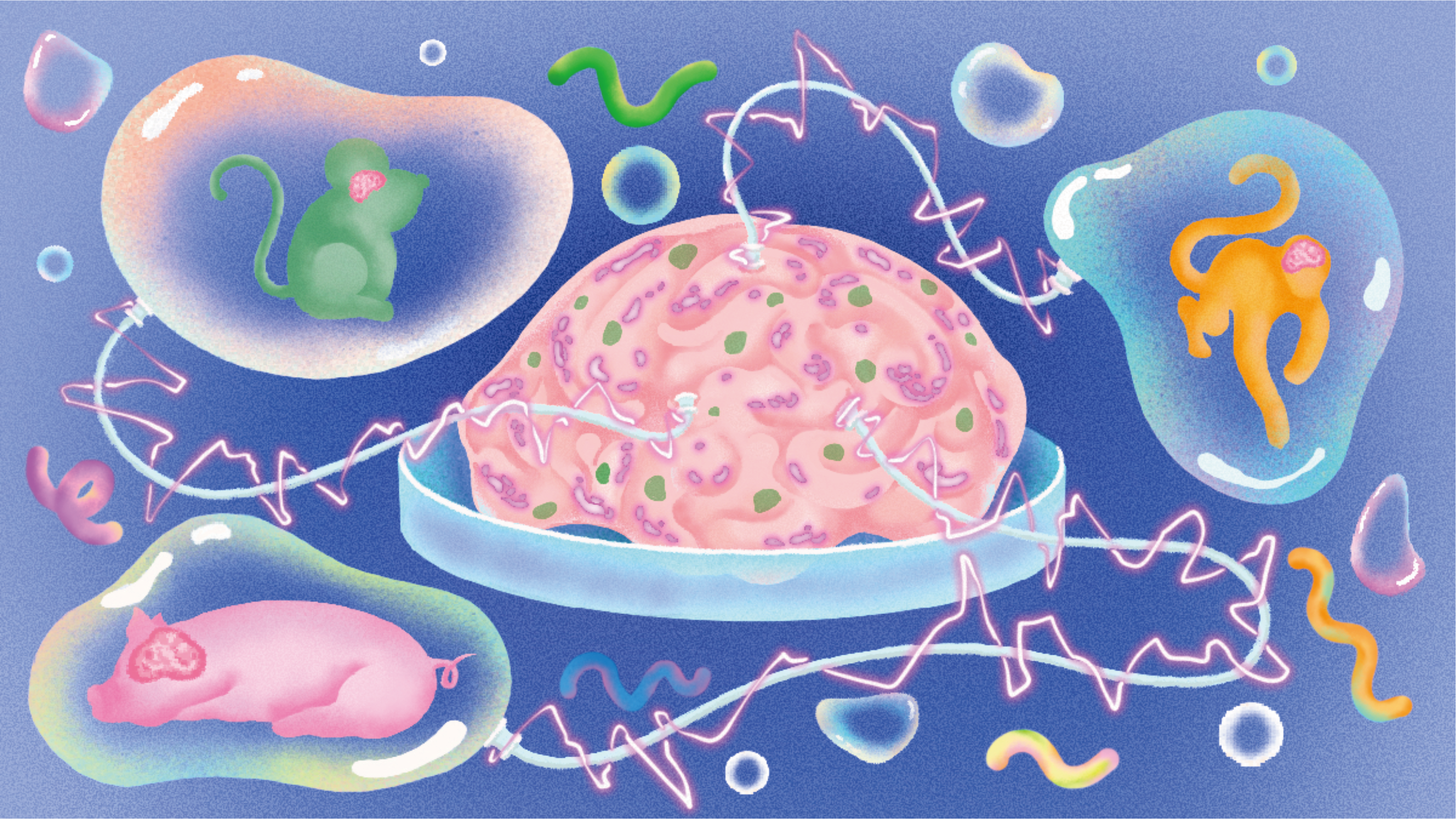Nourishing the Brain: How Astrocytic "Food Sources" Accelerate Organoid Maturation
Published in Bioengineering & Biotechnology and Neuroscience

The human brain is a marvel of biological engineering, shaped over millennia to become the most complex organ. Yet, one question looms large for scientists trying to model its development in a dish: What fuels its maturation? Brain organoids—miniature 3D models derived from stem cells—offer unprecedented insights into neurodevelopment and disease.
The Quest for Maturation: Lunchroom Hypothesis
Human brain development relies on a symphony of nutrients, growth factors, and cellular interactions—many orchestrated by astrocytes. These star-shaped cells provide neurons with metabolic support, prune redundant synapses, and secrete proteins critical for building functional neural networks. Yet, in organoids, astrocytes develop late and sparsely, leaving neurons undernourished and stuck in an immature state with limited functional performance.
During a regular lunch discussion, my colleagues and I found ourselves venting about a shared frustration on the maturity of brain organoids: “It’s like watching paint dry.” “Maybe we should just feed them with some key nutrients.” In 2D neuronal cultures, scientists have long used rodent astrocytes to accelerate the maturity of human neurons. These cells act as a nutritional scaffold, secreting factors that promote synaptic growth and electrical activity. But in 3D organoids, this approach was untested—partly because organoids were assumed to be self-sufficient.
We questioned this assumption. If astrocytes are the brain’s chefs, cooking up the molecular "food" neurons need to mature, could supplementing their secretions bypass the organoids’ immaturity? The idea felt almost too simple. But simplicity, we reasoned, might be its strength. One study even noted that cross-species astrocyte factors (e.g., mouse-to-human) worked surprisingly well.
Harvesting Nature’s Recipe: Trials in Astrocyte Cuisine
Our first attempt at harvesting mouse astrocytes was… educational. Eager to begin, we dissected neonatal mouse brains, aiming to isolate astrocytes from the cortex. But when we cultured the cells, they grew in flat, sprawling sheets—nothing like the bushy astrocytes we expected. It took half a month to perform the experiments and half a month to figure out that we got meningeal cells instead of astrocytes. Turns out, the delicate pia mater clinging to the brain’s surface had hijacked our cultures. This stumble taught us a lesson in humility—and precision. We refined our dissection protocol, meticulously peeling away membranes, and soon had vials of bona fide astrocytes. Their secretions, collected for one week, became our “maturation dose.”
When we dosed organoids with this astrocyte-conditioned media, the results were striking: Astrocyte-secreted cues, derived from natural sources, were found to promote maturation, featured by overproduction of deep layer neurons, enlarged neuronal layer, and the elevated maturation of functional neural networks. Nature, it seemed, had already engineered a maturation cocktail—we just needed to borrow it.
The Cross-Species Surprise: Why Mouse Astrocytes Work
As we prepared our manuscript, one critique loomed large: Why use mouse astrocytes instead of human ones? Reviewers worried that cross-species factors might distort human neuronal behavior. This challenge became our project’s most illuminating detour.
We revisited the literature and found that mixed-species cultures seemed technically more feasible for in vitro studies. Then, we performed more experimental and mechanistic validations. This investigation revealed unveiled the pivotal role of lipid droplet (LD) accumulation in elucidating the protective effects of astrocytic factors within neural cultures. This metabolic rewiring created a pro-differentiation niche, where LDs served as a neuroprotective mediator, buffering cellular stress and enabling sustained neuronal maturation.
Notably, the mouse astrocyte-conditioned medium induced superior effects, stimulating more profound LD accumulation and generating a higher proportion of mature neurons. This suggests an intriguing interspecies synergism in the lipid-mediated mechanisms governing neural maturation.
The Bigger Picture: A New Era of Brain Nourishment
This cross-species synergy in our findings, while initially controversial, became a cornerstone of our story. It hinted at a universal “language” of astrocyte signaling—one that could be harnessed to bypass the slow pace of human astrocyte development in organoids. Could other species’ brain components help us engineer better human models? The idea of “using brains to build brains” feels almost poetic. Imagine tapping into the rapid developmental programs of model organisms—zebrafish regeneration, songbird neuroplasticity—to accelerate organoid maturation. Or leveraging evolutionary insights: if mouse astrocytes can push human neurons toward maturity, what might primate or even avian glia offer?

Fig. 1: Using brains to build brains for better-engineered human models
A Journey of Serendipity and Tenacity
Looking back, this journey of iterative scientific exploration is filled with challenges, yet it is also rich with possibilities. What began as a lunchtime “what if” survived dissection mistakes, species debates, and months of optimization. By leaning into biology’s existing wisdom—and staying open to unexpected feedback—we turned a cafeteria conversation into a tool that could potentially nourish organoid research.
To early-career scientists reading this: cherish those informal lab chats. And when an experiment goes awry (as mine did with those meningeal cells), remember: mistakes are just nature’s way of rerouting you toward better questions.
Follow the Topic
-
Nature Communications

An open access, multidisciplinary journal dedicated to publishing high-quality research in all areas of the biological, health, physical, chemical and Earth sciences.
Your space to connect: The Psychedelics Hub
A new Communities’ space to connect, collaborate, and explore research on Psychotherapy, Clinical Psychology, and Neuroscience!
Continue reading announcementRelated Collections
With Collections, you can get published faster and increase your visibility.
Women's Health
Publishing Model: Hybrid
Deadline: Ongoing
Advances in neurodegenerative diseases
Publishing Model: Hybrid
Deadline: Dec 24, 2025

Please sign in or register for FREE
If you are a registered user on Research Communities by Springer Nature, please sign in